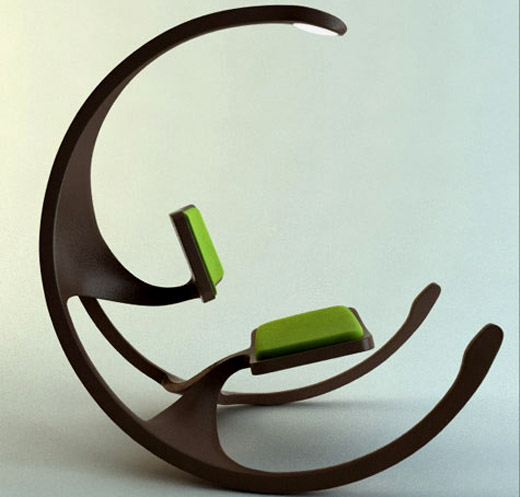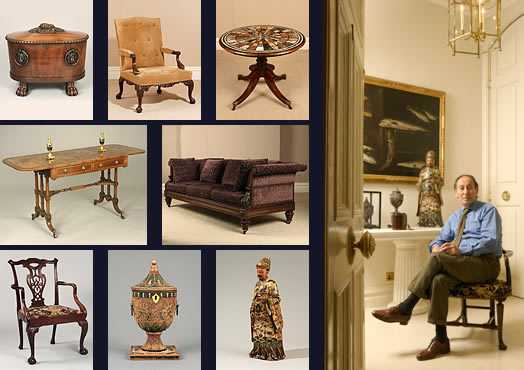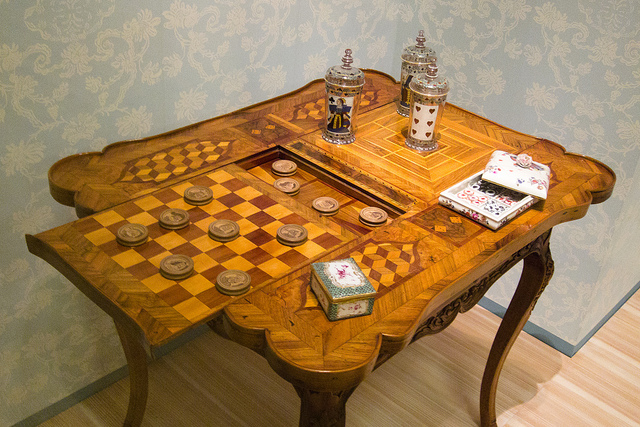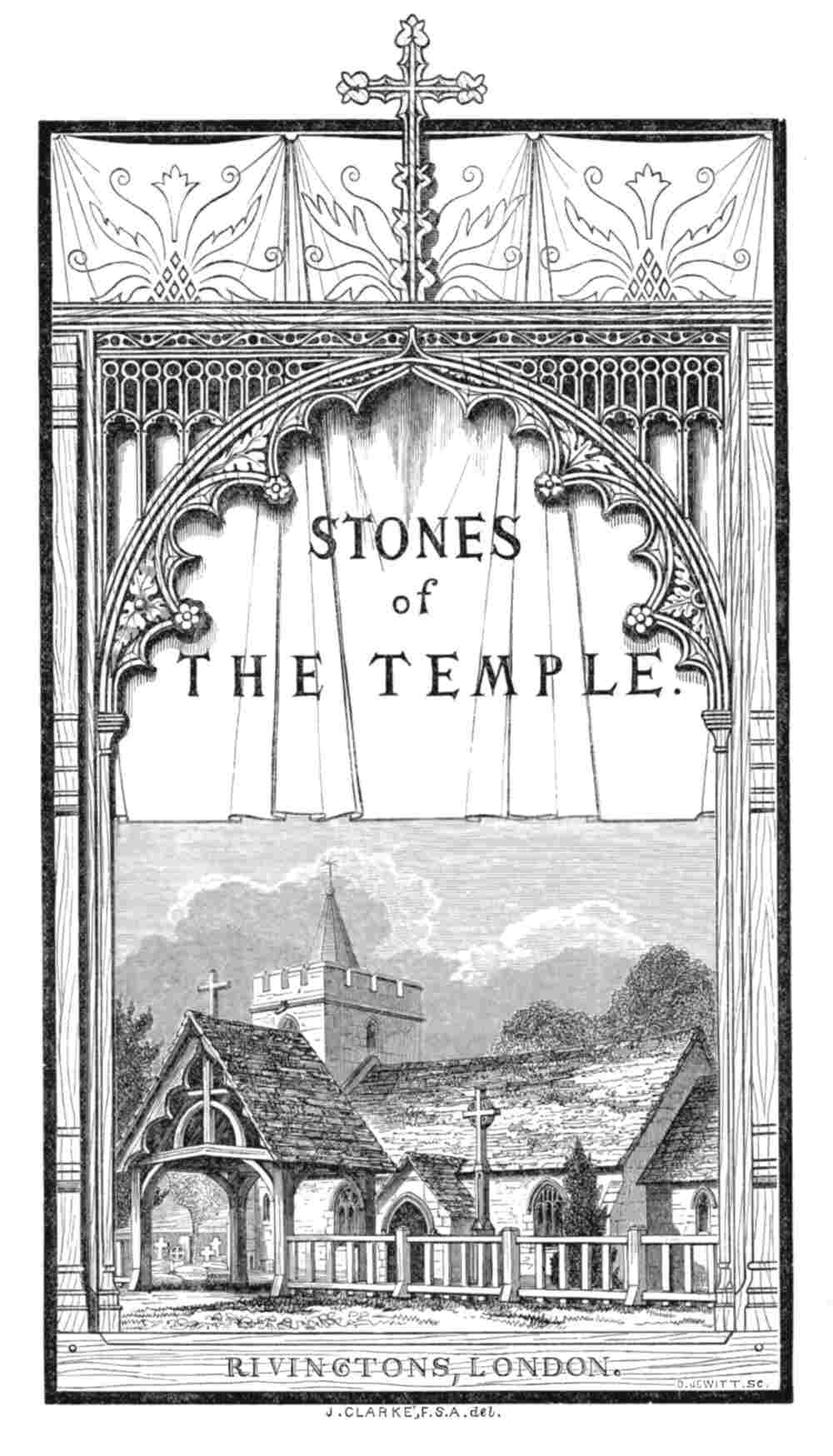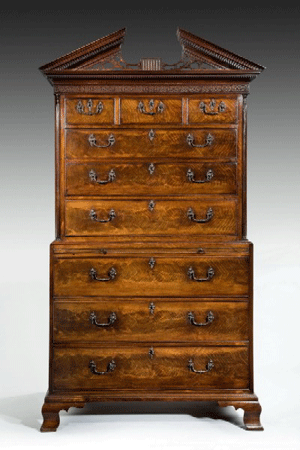Gothic: Medieval church architecture influences this style-characterized by pointed arches, counterbalancing buttresses, open tracery and vertical grandiose emphasis.
Elizabethan: Elizabeth I Reign 1558-1603 England’s Renaissance interpretation.
Renaissance: Derived from Italian Renaissance style-mainly oak functional furniture with scroll & arabesque carving, etc. with horizontal emphasis. A “pendulumatic” reaction to Gothic style.
Pilgrim: Spartan utilitarian American furniture reflecting 17th C. English country styles
Jacobean: Roughly spanning James I (1602-25) & Charles I (1625-49) reigns. Restrained ornament, Moorish influence.
Louis XIII: King reigned (1589-1643), Baroque style including cherubs, cartouches, gilding, and spiral turning.
Cromwellian: Also known as Carolean era. Probably alluding to Irish influence in the era roughly surrounding Charles I.
Louis XIV: The Sun King’s reign (1643-1715) noted for splendor of courts in Versailles and Paris. Marquetry inlaid furniture distinguished by opulence and grandiose size.
Baroque: Flamboyant, heavy, decorative rectilinear style derived from 17th C. Italian architecture.
Commonwealth: Unadorned style that flourished under protectorate of Oliver Cromwell (1649-60) in a revolt against aristocracy.
Restoration: Restoration of kingly Charles II 1660 to the abdication of James II 1688, walnut replaces oak, C and S scroll supports introduced. Not as restrained as the Common man style preceding.
Early Colonial: With some wealth attained, carved oak Hadley chests and turned Great Chairs start making their way into American homes.
Rococo: An exuberant curvaceous style characterized by asymmetrical lines and shell, floral and foliate motifs.
William & Mary: Roughly influenced by William III reign 1689-1702, heightened English style and cabinetry introducing: domed cresting, the American highboy, lacquer work, ball & bun Spanish feet; strong Dutch influence.
Queen Anne: Reign (1702-1714) Along with Chippendale, the finest hour of English and American cabinetry. Feminine petite lines, beautiful proportioning and balance, restrained use of ornament. The cabriole leg and cyma curve are prevalent.
Regence: Transitional melding of baroque into rococo. Romantic elements supplant heroic.
Louis XV: Continuance of the rejection of weighty forms. Rococo exuberance replaces angularity in flowing curves and elaborate scrollwork. Gilded cabriole leg fauteuils are introduced.
Chippendale: Masculinity supplants femininity in furniture. Cabinetmakers like Thomas Chippendale take lead over monarchs in design. Queen Anne form puts on a bowtie and goes rococo, mahogany rules. Oriental influence comes to shore.
Neo Classic: Inspired by continuing excavations and discoveries at Pompeii and Herculaneum (begun 1738) classic Greek and Roman decorative motifs like dolphins, guilloches, lyres and urns emerge everywhere. Straight lines and swags supplant rococo curves.
Hepplewhite: Neo Classicism influences English and American design. Tapered rectilinear legs supplant the cabriole leg. George Hepplewhite’s, “Cabinet Makers and Upholsterer’s Guide” is published in 1788.
Louis XVI: Beginning before 1774, 18th Century French Art climaxes under King Louis XVI, Marie Antoinette and exuberant neoclassic style.
Sheraton: Thomas Sheraton’s “Cabinet Maker’s & Upholsterer’s Drawing Book” is published 1791. Turned Corinthian column legs supplant tapered legs. Square shapes round out.
Directoire: Transitional phase from Rococo to Neo Classic. Soft painted surfaces supplant ostentatious gilt. Rectilinear columnar design replaces curves and cabriole legs.
American Federal Period: The new, emancipated country’s beautiful interpretation of graceful lines and form over excessive ornament. Eagles emerge in great numbers.
Empire: Beautiful at first, then severe in treatment-especially in America-of Classical forms. Surrounded by wreaths, Napoleonic ormolu bronze mounts highlight mahogany.
Regency: Several styles emerge in Britain based on a blending of traditional English lines with Gothic and Neo Classic influences.
Biedermeier: The great German reaction against English and French rococo style. Generally rectilinear or slightly draping lines. Beautiful woods, generally with little or no ornament. Comfort and common sense supplants ostentation.
Victorian: The machine age takes hold. Ornament and busyness supplant the weightiness of Empire in its last days. More is better.
Arts & Crafts: Rebellion against the Victorian Industrialism. Objects that appear to be made by hand are in again. In America, Gustav Stickley spearheads the Mission Oak furniture movement featuring mortise & tendon joining and rectilinear lines.
Jugendstil: Germany’s brilliant Arts & Crafts and Art Nouveau movement. Strongly influenced the path toward modern art developments.
Art Nouveau: Probably born in a Parisian art shop (Samuel Bing c. 1895) the new “Moderne” kind of art and design influenced by nature, Japanese style and flowing feminine lines. A continued reaction against the Victorian era of the “machine.”
Art Moderne: Art Nouveau gives way to technology. NYC’s Chrysler building is a standing testament.
Art Deco: Who needs humanistic/naturalistic lines and earthy tones? Chrome and plastic supplant wood. Bon Voyage, Art Nouveau. The rocket age is born and furniture, art and design are going for the ride!
Empowered slightly by societal change, and mostly by society’s obsession for change itself, furniture and art movements have historically swept from country to country. Sometimes, the “Period” or “Style” titles in those various lands are much more differing and confusing than the inspiration behind them.

